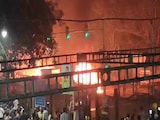- Stars entering the red giant phase often destroy many of their surrounding planets according to TESS data
- Researchers analyzed nearly 500,000 systems, identifying 130 planets around stars becoming red giants
- Planets around red giants have a very low survival chance due to strong tidal gravitational forces
When stars like our sun age and enter their "red giant" phase, they may be far more dangerous to their planets than scientists had realised. Using NASA's Transiting Exoplanet Survey Satellite (TESS), astronomers have discovered new evidence showing that many planets are destroyed as their stars undergo this dramatic transformation, reported Space.com.
TESS hunts for planets outside our solar system, known as exoplanets, by observing tiny dips in a star's light when a planet passes in front of it.
The researchers started with data from nearly half a million planetary systems and narrowed it down to about 15,000 potential planet signals. They then used a computer algorithm to focus on stars that were beginning to become red giants, identifying about 130 planets, 33 of which were previously unknown.
This study revealed that planets around red giants have a very low chance of survival, suggesting that many planets are destroyed or accreted by the star during this stage.
Researcher Edward Bryant of the University of Warwick explained that their findings provide strong evidence that when stars progress beyond the main sequence stage, they can quickly pull in and destroy their nearby planets.
He also said that the team expected this effect, but were surprised by how effective red giants are at swallowing their surrounding planets.
Stars enter the red giant phase when their cores run out of hydrogen and the nuclear fusion process that powers them, like main-stage stars, ceases. As the core contracts and the outer layers expand, the star can expand to nearly 1,000 times its original size.
This extreme expansion poses a serious threat to nearby planets. For example, when the Sun becomes a red giant in about 5 billion years, it will likely swallow Mercury and Venus, and perhaps even Earth.
Bryant explained that planetary destruction is primarily caused by tidal interactions, the gravitational pull between the star and the planet. As the star expands, these forces increase, causing the planet to slow down and its orbit to shrink, eventually collapsing into the star.
The team found that stars already in the expansion phase have only a 0.11% chance of hosting a planet, about 3% less than main-stage stars. The likelihood of red giants hosting large planets like Jupiter or Saturn also decreases as stars age.
Researcher Vincent van Eylen of University College London said that Earth is probably safer than the giant planets studied, but its survival is not certain.
He explained that their research is limited to the early stages after the main sequence, meaning stars will still evolve. Earth may survive the Sun's red giant phase, but life will probably not be able to exist during this time.















